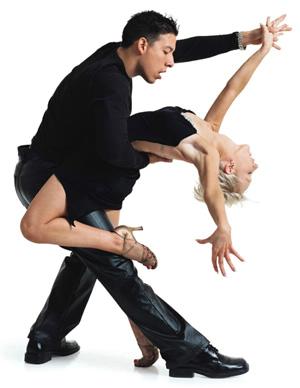Thu 3 Dec 2009

Christopher Washburne quotes, “Although Salsa consists of Cuban and Puerto Rican roots, the passion and pain for the dance shouts from the rooftops of New York City.” In Washburn’s book titled, “Sounding Salsa,” it discusses the importance of the dance and music, its origins and how Salsa changed the lives of New Yorkers forever. After talking with a fellow dancer, this book was recommended to me in hopes of explaining how Salsa became successful in both Latin America and United States cultures.
Salsa is a sensual dance created by Spanish-speaking people from the Caribbean. Salsa mixes African and European dance influences through the music and dance fusions that are the roots of Salsa. The steps involve large amounts of shaking, shimmying and hip action which requires you to be in touch with your body and your partner. Although the dance was created in Latin American territories, New York came up with the term “Salsa” and made it what it is today. Washburne particularly discusses the importance of the Latin and American influence on the dance. If there wasn’t a collaboration of cultures and traditions, Salsa would not be as popular as it is today.
Washburne, a professional Salsa musician describes how the music and dance was brought to New York City, the violence and drug abuse that has followed the style and how salsa has affected New Yorkers and Americans alike. Salsa was brought to New York City in the 1990’s and the dance grew as it intrigued gang members and other people seeking a new style. Americans became intrigued by the laid back partner dancing and especially the music. However Salsa also gave gang members reason to battle. These battles started out in Queens and would generally result in violence. This brought some Americans at a crossroad as to whether Salsa had a positive or negative influence on the city.
After reading Washburne’s book, it inspired me to get out in the community and experience Salsa for myself. I contacted a local dance company that offered a wide range of Salsa and other Latin American classes. Dando Mambo Dance Company is a well known studio that offered social courses at the Cardinal Bar. I was able to take a partner and actually participate in a class. My instructor was Edgar Molina, who started dancing at age 6 and learned Salsa by age 10. In his words, “Salsa is more than just a dance, it’s a unique feeling. The rush and energy that occurs on the floor brings fire to the dance. It’s a spiritual experience that I try everyday to share with others.”
In conclusion, reading and being able to experience Salsa has allowed me to get into the depths of the dance. One question that occurred to me was would Salsa be what it is today without the music? Washburne explained that even if salsa was put with a different genre of music, it still wouldn’t be the same. It’s the music that makes the dance and the dance that makes the music; one is nothing without the other. Salsa dancing relates to many topics we’ve discussed throughout the semester, one including Alma Guillermoprieta’s lecture on culture and what it is to be Mexican. Culture is a very important aspect of salsa dancing, without following tradition this technique would not still be around today. Salsa also relates to DJ Luis Islas’ music and previous discussions on violence with music. I’m very fortunate to have been able to experience this topic and I hope to be able to continue studying and taking classes in the future.

